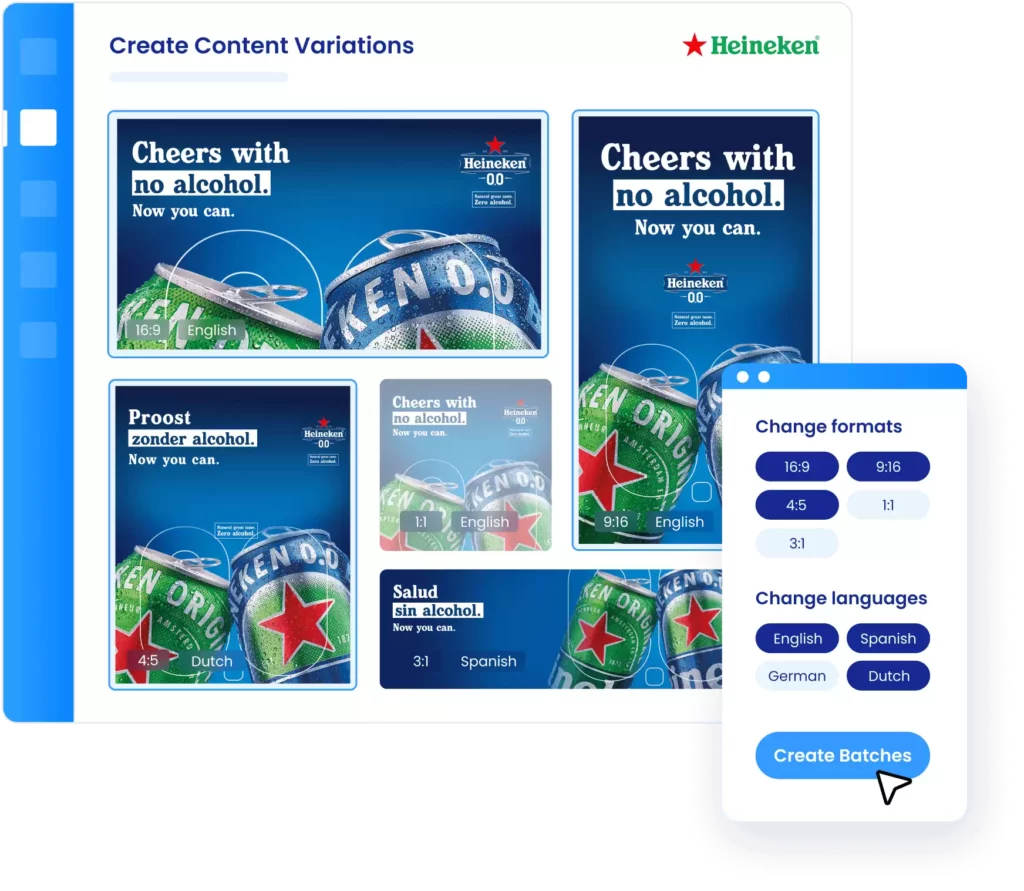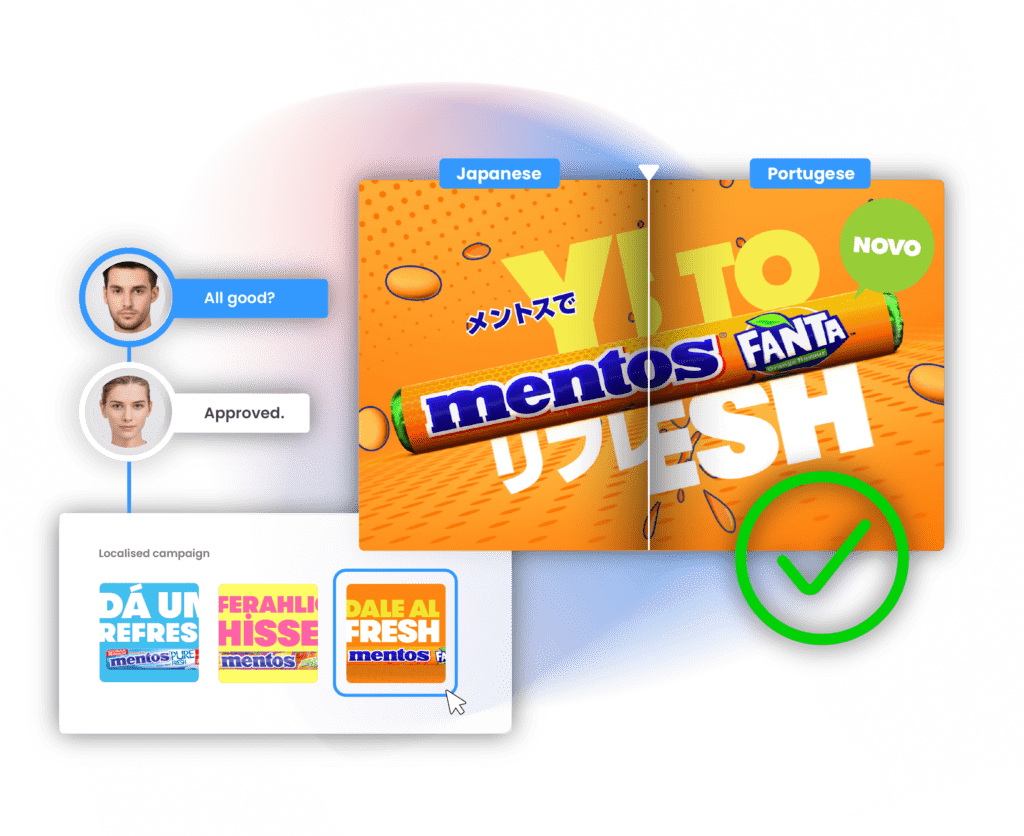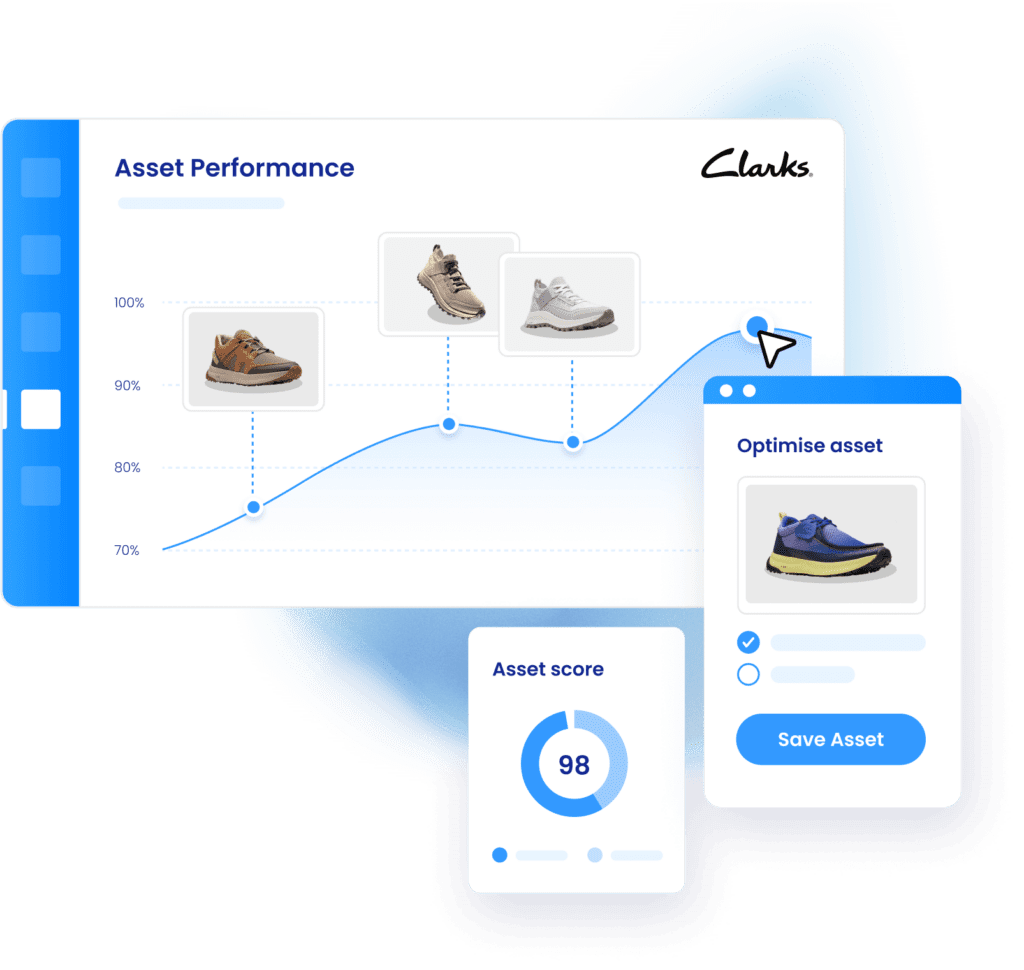Creative leaders often respond to an increasing demand for content by expanding their team or outsourcing work to external agencies. According to Dentsu’s annual CMO survey. In 2022, 84% of CMOs opted to increase their in-house teams while the remaining 16% prefer outsourcing to external agencies. Though this approach can be cumbersome and costly, it remains common.
This article explores an alternative solution: Creative Automation, which streamlines creative production workflows by automating repetitive tasks, making the lives of creatives and marketers easier.
Understanding Creative Automation
How do your designers react when you tell them that the brand new video ad they just finished creating needs to be made into 50 other versions?
“Hey, can you update all banners with our new logo?”
“May I have this image re-made for our X, Y and Z markets?”
“Change the price and Call to Action in this video. 12 times.”
They may not show their dismay, but they’re likely dying inside knowing how tedious all of this manual adaptation work will be.
Creative Automation can offer respite from this and is defined as the process of using technology to automate the adaptation and modification of banner or video content, such as size, format, Calls to Action, and other graphic elements. Dynamic creative templates enable high-volume content creation for high-volume demand, minimising repetitive workload for designers.

“In our marketing team, we are producing content daily. Sometimes, we spot some trends and ideas that work in all of our games. With Creative Automation, we can use these ideas and put them into the Storyteq platform to save time, be more efficient, and deploy a large number of videos in less than an hour.”
Sébastien Noiret, Marketing Artist at Voodoo
What drives Creative Automation and what problem does it solve?
> It tackles the growing demand for creative assets.
> This approach is more affordable and efficient, removing repetitive work from the process.
> It leverages templates to automate the generation of multiple versions of a base ad.
How does Creative Automation work?
1. Creating a strong base digital creative asset or master template.
2. Customising the base asset into dynamic, reusable templates.
3. Linking data to dynamic elements in the templates.
4. Generating numerous versions quickly.
5. Sharing, using or split-testing the versions as needed.
Benefits of Creative Automation
Through Creative Automation, companies are four times more likely to see improvements in their creative asset post-production processes. Some key benefits include:
Going to market at greater speed
Centralising creative production through a Creative Automation platform helps companies bring everything under one roof. Creative assets can be rapidly commented on, reviewed and reiterated, thus keeping control of creative content and eliminating the need for back and forth. Implementing Creative Automation into your workflows frees up hours for higher-level tasks and ensures faster market response.

“When I think about post-production efficiency, I definitely think about Storyteq. It helps us deliver more value to our clients by keeping them away from the studio and offering multiple relevant content for all their requirements upfront.”
Thom Specht, Digital Producer at Boomerang
A key ingredient in building a successful brand is the ability to be consistent. Brand consistency can increase revenue by 23%, an evident reason for making sure you have the platforms you need to succeed with your process.
Creative Automation ensures brand consistency across teams around the globe while reducing compliance bottlenecks and the need for continuous oversight.
Personalised, branded content
As privacy laws evolve and we enter into the cookieless era, personalised ads will rely more on owned data and contextual advertising. By emphasising ad quality, brands can improve results and better engage customers. Even this small shift towards how you conceptualise and craft the ads you deliver will improve results a lot faster than trying to replace what’s lost due to cookies.
Gaining insights through optimisation
Testing and segmentation are key for providing personalised ad experiences to targeted audiences. Creative Automation supports this flexibility, agility and adaptability.
A more personalised ad experience brings you closer to your audience. And with improved segmentation comes the ability to deliver a more one-to-one experience, increasing engagement.

“Storyteq is ideal for us to perform A/B testing. We can change a lot of dynamic elements in the templates and try what works best in our target audiences. This can be copy, color usage, models, etc. Using Storyteq makes it very cost- efficient because we can easily create these banners ourselves.”
Marc Poelsma, Online Marketer at Allianz Direct
Facilitating distributed collaboration at scale
What does it mean to be connected in a time when teams and platforms are more distributed than ever?
Today, enterprise knowledge workers switch between an average of 10 apps 25 times per day to execute work, resulting in unconnected communication, reduced efficiency, and duplicative work. This results in challenges to team alignment.
Creative Automation provides structure and aligns workflows, which are particularly essential for marketing teams collaborating across multiple platforms and tasks.
Key takeaways
- Manual versioning is unsustainable and not scalable.
- Creative Automation supports advertisers in adapting to a cookieless era.
- It centralises creative production, streamlining collaboration and review for remote teams.
Wrapping up
As customer behaviour and advertising become more complex, the importance of Creative Automation will only grow for effective storytelling and performance.
New contexts require new approaches and it’s those who embrace Creative Automation who will gain an innovative edge and stay ahead. Don’t wait—start harnessing the power of Creative Automation today, saving your brand time and money.
Frequently asked questions
How does Creative Automation maintain brand consistency across different markets and languages while automating content creation?
Creative Automation ensures brand consistency across different markets and languages by utilizing dynamic templates and centralized brand guidelines. These templates allow for automated customization of content while adhering to predefined brand standards, ensuring that all marketing materials, regardless of the market or language, maintain a consistent brand voice and visual identity. This approach significantly reduces the risk of brand dilution, even in highly localized campaigns.
What strategies does Creative Automation offer for managing and streamlining content approval processes across diverse global teams?
For managing and streamlining content approval processes across diverse global teams, Creative Automation offers streamlined workflow management tools that facilitate efficient collaboration and communication. The platform can automate notifications and keep track of revisions and approvals, ensuring that all stakeholders are kept in the loop. By centralizing feedback and approvals, the system reduces delays and confusion, enabling faster decision-making and ensuring that marketing campaigns are deployed swiftly and efficiently across all intended markets.
How does Creative Automation adapt to the complex organizational structures of global enterprise companies?
Adapting to the complex organizational structures of global enterprise companies, Creative Automation platforms are designed for scalability and flexibility. It enables seamless collaboration across different departments, regions and marketing teams, ensuring that the creative production process aligns with the organizational hierarchy and governance structures of large enterprises.